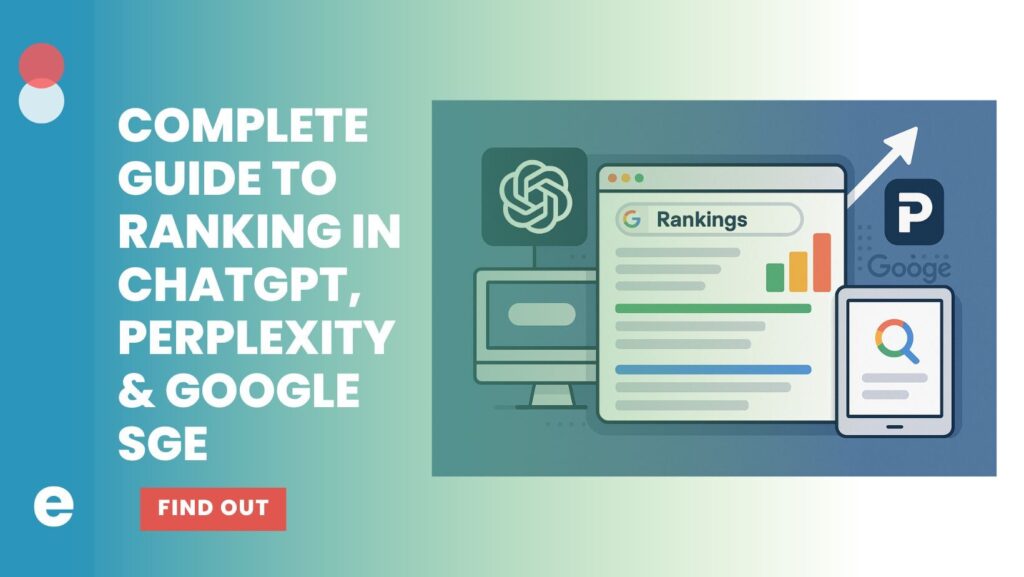TL;DR: Scaling marketing efforts effectively involves using automation tools, leveraging data-driven insights, fostering team collaboration, and setting clear KPIs to maintain quality while expanding reach and impact, according to Enilon’s blog on scaling marketing strategies.
Setting Clear Business Objectives
Setting clear business objectives is the foundation of any successful marketing strategy. By defining specific, measurable, achievable, relevant, and time-bound (SMART) objectives, companies can ensure their marketing efforts are purposeful and aligned with overall business goals. These objectives should focus on unlocking growth opportunities, driving customer acquisition, and encouraging repeat business, all while reinforcing a strong brand identity.
To create effective business objectives, start by analyzing current market conditions, understanding customer needs, and keeping a close eye on industry trends. This approach allows businesses to optimize their marketing strategy, ensuring every campaign and initiative supports broader company ambitions. Regularly reviewing and adjusting business objectives is essential to maintain relevance and drive continued success. With clear business objectives in place, companies can effectively communicate their brand, optimize marketing activities, and ultimately drive sales and growth.
Understanding Your Target Market
A deep understanding of your target market is essential for developing a successful marketing strategy that resonates with your audience and drives results. Conducting thorough target market analysis helps identify the specific needs, preferences, and behaviors of your target audience, enabling you to create personalized content and tailor your marketing campaigns for maximum impact.
Utilize data analytics to gain insights from customer inquiries and online interactions, and stay ahead of industry trends and technological advancements to ensure your marketing strategy remains effective and scalable. By truly understanding your target market, companies can develop a scalable marketing strategy that increases brand visibility, attracts new audiences, and drives online sales. This data-driven approach ensures that marketing resources are allocated efficiently and that every campaign is designed to engage the right audience at the right time.
Developing a Distinctive Brand Identity
In today’s competitive market, developing a distinctive brand identity is crucial for businesses looking to stand out and build lasting relationships with customers. A strong brand identity not only enhances brand reputation but also fosters customer loyalty and supports long-term business growth.
To create a memorable brand identity, focus on developing a unique value proposition, crafting a compelling brand story, and maintaining a consistent visual presence across all platforms. Leveraging digital marketing services, such as search engine optimization (SEO), can significantly boost brand visibility and help your business reach a wider audience through search engines and other digital channels. By investing in a distinctive brand identity, companies can effectively communicate their message, differentiate themselves from competitors, and achieve their business objectives.
Exploring Different Marketing Channels
Exploring a variety of marketing channels is essential for reaching your target audience and achieving your marketing goals. From social media posts and paid ads to content marketing and media buying, each channel offers unique opportunities to connect with customers and drive sales.
To determine the best mix for your business, analyze your target market, assess your marketing budget, and use data analytics to evaluate the effectiveness of each channel. Continuously monitor the performance of your marketing campaigns and adjust your strategy to optimize results. By leveraging multiple channels, companies can expand their reach, increase online presence, and stay ahead of the competition, ensuring their marketing efforts are always aligned with business objectives and market demands.
Implementing Automation Tools for Efficiency
Implementing automation tools is a game-changer for businesses aiming to streamline their marketing operations and maximize efficiency. Marketing automation platforms enable companies to automate repetitive tasks, deliver personalized content, and optimize marketing campaigns with minimal manual effort.
To get started, assess your marketing needs, research different automation tools, and develop a strategic integration plan that aligns with your business goals. Use data analytics to track the effectiveness of your automation efforts and refine your strategy as needed. Automation tools not only enhance marketing impact and drive business growth but also free up valuable time for your team to focus on high-value activities like strategy development and creative content creation. By embracing automation and staying ahead of industry trends and technological advancements, companies can achieve greater efficiency, optimize their marketing campaigns, and reach their marketing goals faster.
Now It’s Time to Analyze the Data To Begin the Test & Scale Phase of Your Marketing Plan.
Measuring Marketing Success
The first stage was to identify your needs and formulate a [blueprint for building your 2021 Marketing Strategy](https://www.enilon.com/blog/digital-marketing-blueprint-brings-great-ideas-to-life/), either on your own or through an agency partnership. Then came the time to build, implement, and execute the agreed-upon strategies for growth and success. The third stage is critical, the booster rockets have fallen away, and now the finely tuned instruments and well-trained personnel keep the plan in orbit and on mission. With your new deliverable, you need the framework to monitor key metrics, including key performance indicators (KPIs), which are essential for tracking marketing success and ensuring these metrics precisely measure effectiveness. Conversion rates are a critical metric for evaluating campaign performance and maximizing return on investment.
How will you go about this? By setting up your build to leverage user data, you can let your customer base define and, by extension, design, the optimum version of your messaging through regular data polling, analysis, and application via A/B testing. No more not seeing the desired metrics in the expected timeframe. We recommend creating a dashboard that is available to you dynamically and ensures you are gleaning what you need for your business and that data and analytics are driving towards the right results. Optimizing campaigns based on these insights will help refine your approach and improve efficiency. Metrics to track should include website traffic as an important indicator of audience engagement. As you adapt and improve, your marketing strategies should be continuously refined based on measurement results to meet evolving goals.
Monitor Your Marketing Dashboard
Back to the initial strategy session, you’ll have outlined what KPIs you need to track to achieve your definition of success: pageviews for an awareness campaign, dollar amounts for an e-commerce component, cost per customer acquisition rate, and more. Daily I see a local billboard for one of those stand-alone ERs that suddenly seem to be on every corner. The billboard displays the average patient wait time, a KPI that is an important KPI to both the medical industry and the potential patient. I have to admit I am grateful to be in good health right now, but the short wait times’ effectiveness is not lost on me during this pandemic — because of the billboard, I know where I am going should the need arise.
By closely following the journey map and audience personas that you and your agency partner carefully crafted, you can target specific audiences at specific points in time during the marketing campaign’s life. At Enilon, we create a customized dashboard particular to each client that shows the health of their campaign, which can be viewed anywhere, at any time. Enilon’s specifically designed individual dashboard provides you with full transparency and up-to-the-minute detailed reporting throughout the campaign. Again this allows everyone on the team to have live access to KPIs, success markers, tracking data, and actionable intel.
The data collection informs our regular audits of the deliverables and provides performance metrics. These data-informed analyses will allow us to identify weaker components that the team vets against stronger, newer “B-variants” – to increase the given metric, more commonly known as A/B testing. We can change ad copy and creative or create a different landing page experience. The new data might lead to designing an alternate web page layout, changing the shopping cart experience, or a small yet highly impactful navigation bar change that makes it easier for users to navigate to where they want to be.
Where You End Up When You Follow The Blueprint
While you can run a campaign indefinitely, and some clients do just that, for most, there comes a time to “call it.” Either you’ve met your goals and can move on to a new campaign with new goals. Or you’ve learned more than you knew before and can now approach your initial goals with newfound insights and use these insights to achieve the desired results more effectively. Either way, you’ve at best accomplished what you set out to do or at the very least gained immense, data-driven insights into your target audiences.
What You, as a Client, Will Have at This Stage
You will have your customized dashboard that tracks all of the previously agreed-upon metrics, from your various audiences, at crucial points along their journey. You will also receive regular report highlighting weaknesses in the campaign and suggest B-variants for testing and improvement. At the end of the campaign cycle, you will have a wealth of audience-focused, data-driven insights and more than likely, the achievement of your initial goals.
What We, as Your Agency, Will Have at This Stage
We will have a robust data tracking system in place, tied to all of the previously agreed-upon KPIs, one that we will share with you via your dashboard. With enough data collected over time, we’ll have an accurate assessment of current deliverables and insights that inform performance improvement.
FAQs
What does it mean to scale marketing efforts effectively?
Scaling marketing efforts involves growing strategies to reach a larger audience or achieve greater impact without compromising efficiency or quality. Enilon’s blog highlights leveraging automation tools, optimizing campaigns with data-driven insights, and aligning strategies with business goals for sustainable growth.
How can automation help scale marketing efforts?
Automation streamlines repetitive tasks like email marketing, social media posting, and data analysis, allowing teams to focus on high-value activities. Enilon emphasizes using CRM systems and marketing automation platforms to enhance efficiency, personalize customer experiences, and scale campaigns without increasing workload.
Why is data important for scaling marketing strategies?
Data provides insights into customer behavior, campaign performance, and market trends, enabling informed decision-making. Enilon’s blog notes that analyzing metrics like ROI, engagement rates, and conversion data helps marketers optimize campaigns and allocate resources effectively to scale efforts successfully.
What role does team collaboration play in scaling marketing efforts?
Effective team collaboration ensures alignment between marketing, sales, and other departments, creating cohesive strategies. Enilon suggests fostering clear communication and using project management tools to streamline workflows, enabling teams to scale marketing initiatives while maintaining consistency and quality.
How can businesses maintain quality while scaling marketing campaigns?
Maintaining quality during scaling requires strategic planning, consistent branding, and regular performance monitoring. Enilon recommends setting clear KPIs, investing in scalable tools, and prioritizing customer-centric strategies to ensure marketing efforts remain impactful as they grow.


